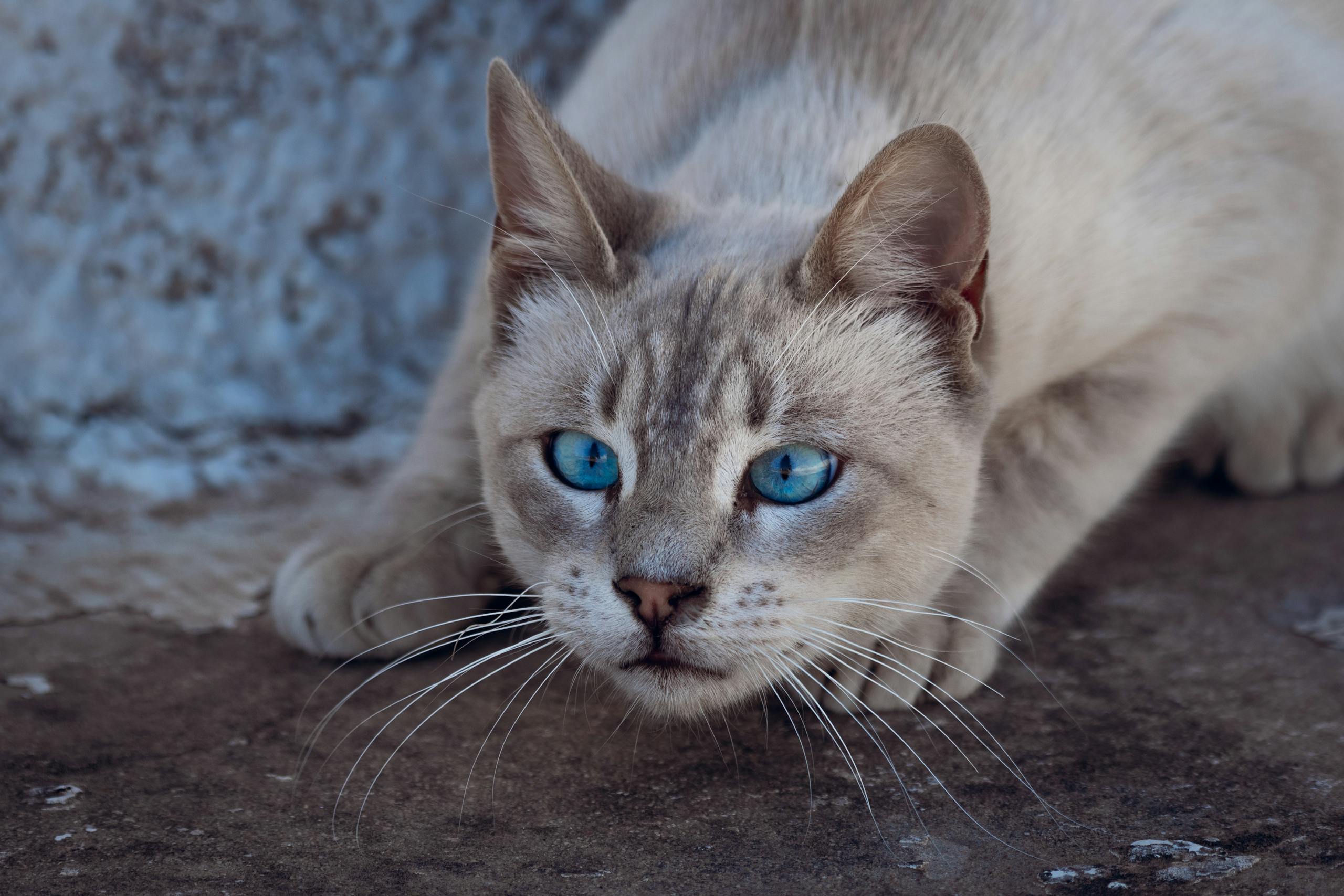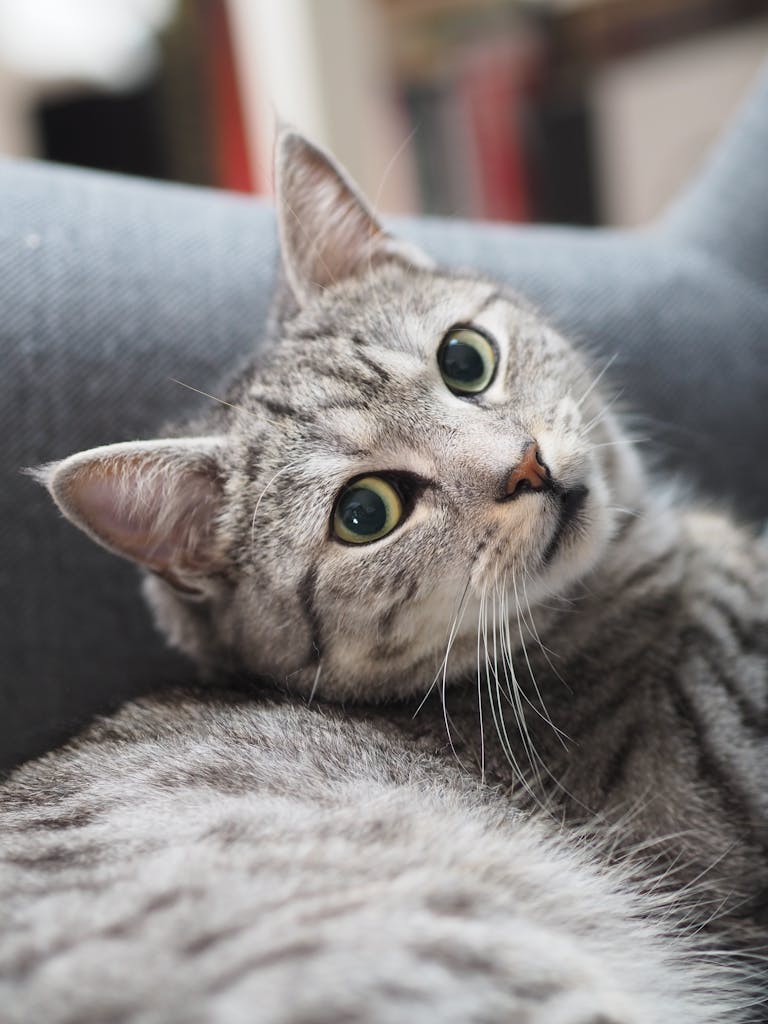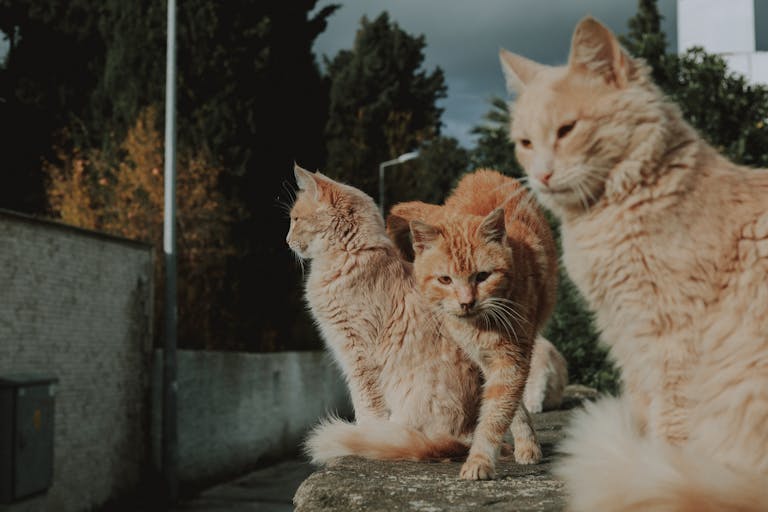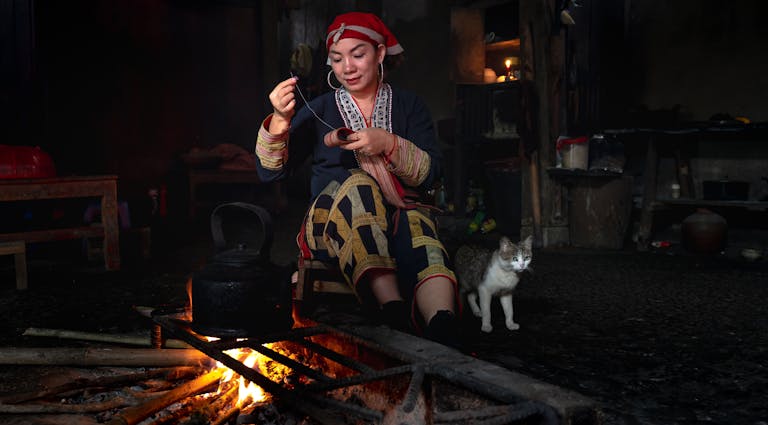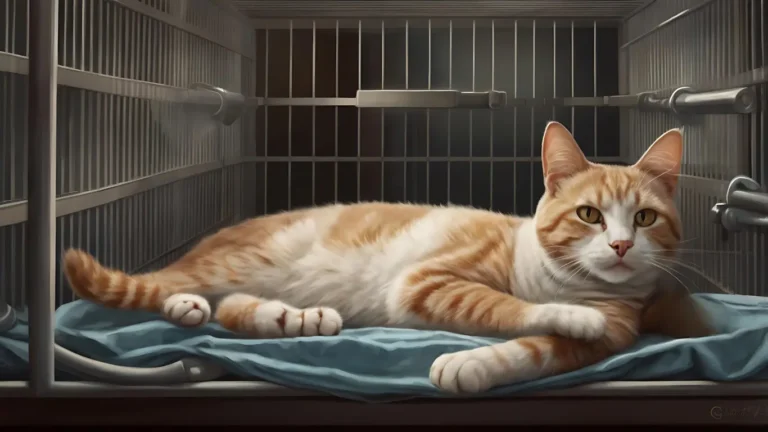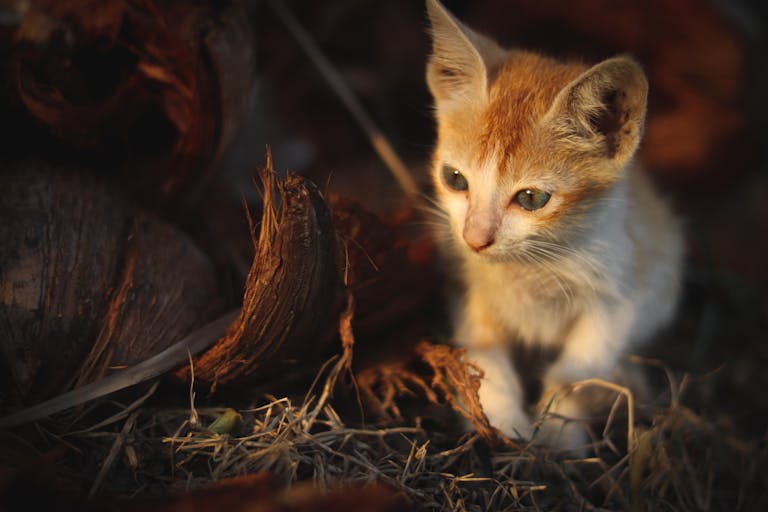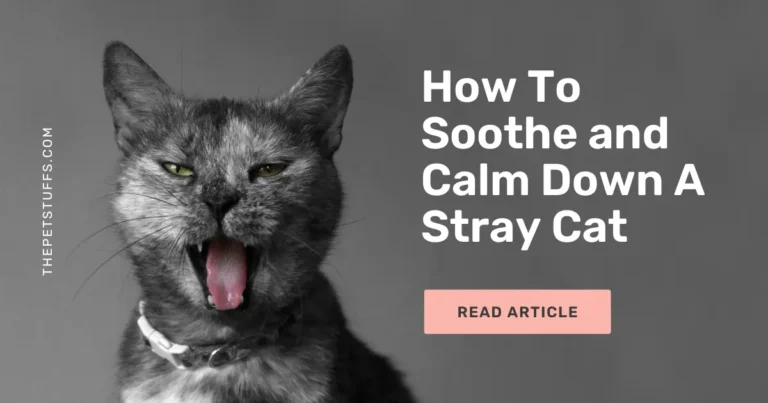Is Your Cat Crouching and Acting Strange? Here’s What You Need to Know!
Have you ever noticed your cat crouching down and wondered what it could mean? This seemingly simple posture can reveal a lot about your cat’s mood, intentions, and health.
Whether your cat is crouching to pounce, showing signs of discomfort, or expressing fear, understanding this behavior is crucial for every cat owner.
Let’s dive into the fascinating world of cat crouching and uncover the reasons behind it.
But first, ask yourself: What is your cat trying to tell you when they crouch? Could it be a sign of affection, or perhaps something more serious? The answers might surprise you.
Key Takeaways
- Uncover why your cat might be crouching and acting strange.
- Learn about the various crouching postures your cat may display.
- Discover what your cat’s body language is really saying.
- Gain insights into how to read your cat’s behavior more accurately.
- Learn what to do when you notice your cat crouching.
Why Is My Cat Crouching Down and Acting Strangely?
When your cat is crouching down and acting strange, it can be puzzling. Cats crouch for various reasons, ranging from the mundane to the serious. This posture often signals that your cat is feeling uneasy or threatened.
For example, if a cat is crouching low with its body tense and ears flattened, it might be feeling scared or defensive.
In some cases, a cat crouching and meowing simultaneously can indicate pain or discomfort, especially if the behavior is accompanied by other unusual actions like hiding or refusing food.
Cats also crouch when they are ready to pounce on something. This hunting behavior is deeply ingrained in their instincts. If your cat crouches with their rear end slightly raised, it’s likely preparing to leap or attack a toy—or even you!
See also Can Cats Eat Spinach?
Understanding the context of the crouch can help you determine whether your cat is simply playing or if something more concerning is at play.
What Are Cat Crouching Positions?
Cats can adopt various crouching positions, each with its own meaning. A low, tight crouch with the body pressed close to the ground, tail tucked in, and ears flattened typically indicates fear or submission.
This posture shows that the cat is trying to make itself small and unnoticeable, possibly in response to a perceived threat.
On the other hand, a crouch with the hindquarters slightly elevated and the front body lowered suggests that the cat is in hunting mode. This position is often seen when a cat is stalking prey or preparing to play.
Another common position is when a cat crouches with its legs tucked under its body, which is usually a sign of relaxation and comfort. This loaf-like posture indicates that the cat feels safe and secure.
Here is a table outlining different crouching positions in cats and their meanings.
| Crouching Position | Meaning |
|---|---|
| Low, tight crouch with ears back | Fear or anxiety, feeling threatened, possibly preparing to defend itself. |
| Crouching with head lowered, body tense | Pain or discomfort, especially if the cat is hiding or avoiding movement. |
| Crouched with tail tucked under | Stress or fear, often seen in situations that cause distress (e.g., a new environment or people). |
| Crouching with eyes wide and body stiff | Hyper-alertness, preparing to pounce or respond to a perceived threat. |
| Relaxed crouch with paws under the body | Comfort and contentment, especially if combined with slow blinking or purring. |
| Crouching with frequent tail flicks | Irritation or frustration, possibly due to overstimulation or something bothering the cat. |
| Crouching while staring intently | Hunting or stalking behavior, focused on a target, whether it’s prey or a toy. |
| Hunched crouch with arched back | Illness or discomfort, especially if the cat is inactive, avoiding interaction, or displaying other signs of sickness. |
Each crouching posture can offer clues about a cat’s emotional or physical state, so observing these subtle differences can help gauge their mood or health.
What Are Cat Posture Meanings?
Cat postures are a window into their emotions and intentions. When a cat crouches, it’s often conveying a specific message. A crouching position with a tucked tail and flattened ears might suggest that the cat is scared or feels threatened.
This could happen if there’s a loud noise or the presence of another animal they perceive as a threat. The lower the crouch, the more submissive the cat feels.
Alternatively, a more relaxed crouch, where the cat’s body is slightly elevated, and its ears are alert, typically indicates curiosity or playfulness. In this posture, the cat is often preparing to explore or engage in play, showing a heightened state of alertness rather than fear.
See also Are Orchids Safe for Cats?
Lastly, a cat that is crouching with its body relaxed, eyes half-closed, and tail loosely curled around its body is likely in a state of contentment. This “loaf” position is common when cats are resting or napping, signaling that they feel completely at ease.
How to Understand Cat Crouching Behavior?
Cat crouching behavior must be understood by closely observing the posture and surrounding circumstances. Crouching is just one of the many body language cues that cats utilize to convey messages.
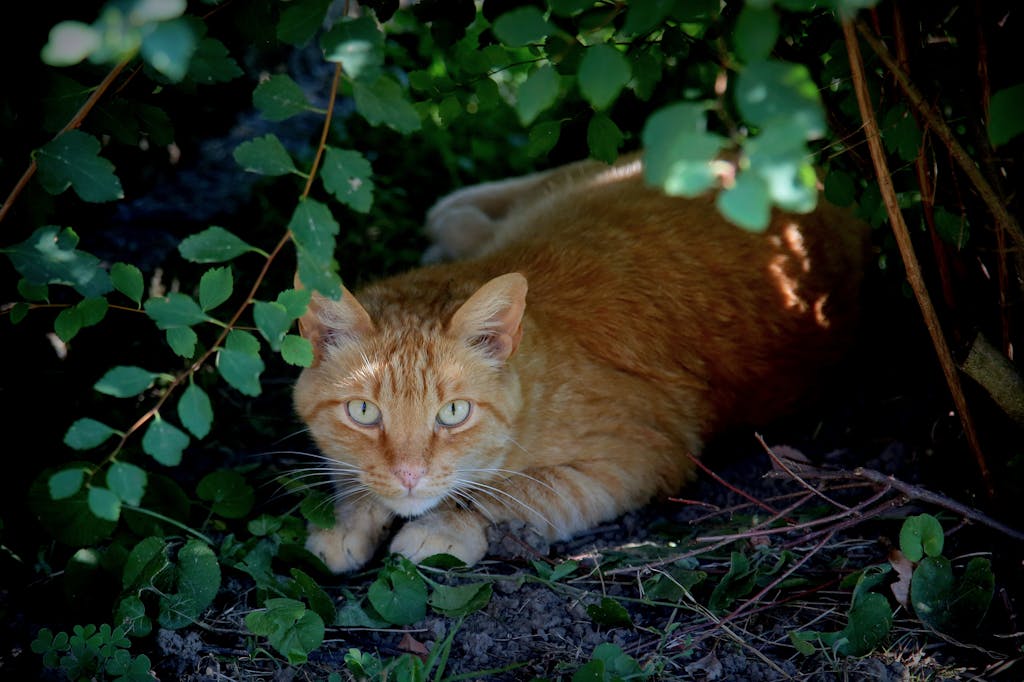
In addition to crouching and appearing agitated, your cat may be hissing, snarling, or have dilated pupils. These actions frequently follow feelings of discomfort or dread.
If your cat is crouching while staring intently at something, it may be in a hunting mode, even if the target is just a toy. This behavior is natural and usually nothing to worry about.
However, if the crouching is accompanied by unusual vocalizations, such as meowing or growling, it might indicate pain or illness. In such cases, it’s essential to consider the overall context, including recent changes in your cat’s environment or health.
By paying close attention to your cat’s behavior and posture, you can better understand what your cat is trying to communicate.
This understanding can help you respond appropriately to their needs, whether that means providing comfort, playtime, or medical attention.
What Do I Do If My Cat Is Crouching?
The first thing to do if you see your cat crouching a lot is to look at the circumstances. Look around your cat to see if there’s anything that’s making them anxious or afraid.
Meowing and crouching, particularly in a male cat, could indicate pain or disease in your furry friend. It is advised in these situations to see a veterinarian in order to rule out any underlying medical conditions.
Your cat’s crouched behavior during play is probably a result of its natural hunting drive. With interactive toys, you can encourage this behavior and keep your cat cognitively and physically busy.
Give your cat some time to get used to a new environment or unexpected shift if it is hiding, and make sure it has a secure place to hide out.
In case your cat is crouched in fear or distress, always approach it softly. Loud noises or sudden movements could make things worse. Instead, give your cat comfort by talking to it gently and giving it gentle pats; however, if it appears too scared to be touched, respect its personal space.
Helping your cat feel confident requires knowing when to step in and when to give them room.
Final Thoughts
Understanding cat crouching behavior is essential for all cat owners. Whether your cat is showing symptoms of fear, playfulness, or discomfort, understanding their body language can help you better satisfy their needs.
Observing your cat’s posture allows you to acquire insight into their feelings and respond appropriately, ensuring their happiness and health.
Remember, every crouch has a story behind it—learning to read these stories will strengthen your bond with your feline friend.
Cat Crouching FAQs
What does it mean if my cat is crouching?
A crouching cat often feels threatened or is in a defensive posture. It can also indicate discomfort, stress, or preparation to pounce.
Do cats crouch when in pain?
Yes, cats may crouch when in pain, as it can be a sign of discomfort, especially if combined with tense body language or hiding behavior.
What does it mean when a cat squats?
A cat squatting could indicate it needs to relieve itself or is suffering from a urinary tract issue. Persistent squatting without urination requires a vet visit.
What is a sick cat's posture?
A sick cat may display a hunched posture, with its head down, back arched, and legs tucked under its body. This posture signals discomfort or pain.
Why is my cat sitting in a crouched position?
Your cat may sit in a crouched position due to stress, pain, or anxiety. If accompanied by other unusual behaviors, a vet consultation may be necessary.
How to tell if your cat is suffering?
Signs your cat may be suffering include hiding, loss of appetite, vocalizing in pain, changes in posture (hunched or crouching), and reduced activity or grooming.

